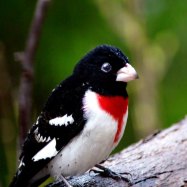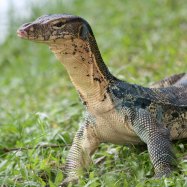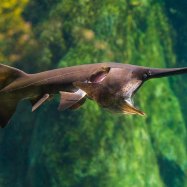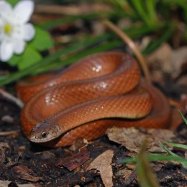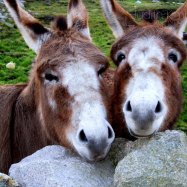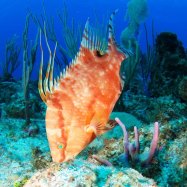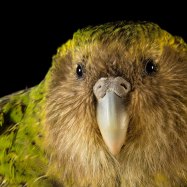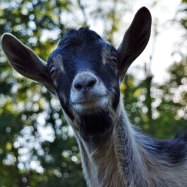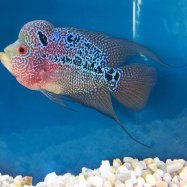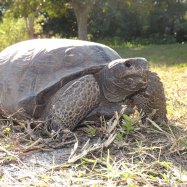
Madagascar Tree Boa
3-6 feet
. The Madagascar Tree Boa is a fascinating snake found in the rainforests of Madagascar. With a length of 3-6 feet and a heavy body, it's no wonder it thrives in trees and vegetation. Belonging to the Boidae family, this stout built serpent is a must-see for any nature enthusiast. #MadagascarTreeBoa #snake #rainforest #wildlife
Animal Details Summary:
Common Name: Madagascar Tree Boa
Kingdom: Animalia
Habitat: Madagascar's tropical rainforests
The Fascinating World of the Madagascar Tree Boa
Deep within the tropical rainforests of Madagascar, lives a creature that holds a certain mystery and intrigue - the Madagascar Tree Boa (Sanzinia madagascariensis). With its scientific name often tongue-twisting and hard to pronounce, this snake is more commonly known as the Madagascar Tree Boa. Despite its more well-known cousins in the boa family such as the Anaconda or the Boa Constrictor, this species has its own unique features and habits that make it a fascinating and important part of the natural world.A Classification Worthy of Royalty
The Madagascar Tree Boa belongs to the Kingdom Animalia, phylum Chordata, and class Reptilia Madagascar Tree Boa. This classification may seem like a mouthful, but it's actually quite simple. It means that the Madagascar Tree Boa is an animal with a backbone, similar to other reptiles such as lizards or crocodiles. It is also part of the order Squamata, which includes animals with overlapping scales such as snakes and lizards. Its final classification is within the family Boidae, along with other well-known boas.Home Sweet Home: The Tropical Rainforests of Madagascar
As its name suggests, the Madagascar Tree Boa is native to the island of Madagascar, located off the coast of Africa. It can be found throughout the island, but its main habitat is the moist tropical rainforests, where it can comfortably live among the dense vegetation and trees.Due to deforestation and habitat loss, the Madagascar Tree Boa population is declining, making it a vulnerable species. This highlights the importance of preserving and protecting its natural habitat to ensure its survival in the wild.
Survival of the Fittest: Feeding Habits of the Madagascar Tree Boa
As a carnivorous species, the Madagascar Tree Boa feeds mainly on small mammals, birds, and lizards Moccasin Snake. Its method of hunting is by using its sharp teeth and powerful constriction to squeeze its prey until it suffocates. This feeding behavior is similar to other boas, but what sets this particular species apart is its unique ability to climb trees to hunt. This adaptation allows it to access its prey in higher areas, making it a master predator in the rainforest.A Striking Visage: The Appearance of the Madagascar Tree Boa
One cannot help but be mesmerized by the patterns and colors of the Madagascar Tree Boa. Its striking appearance is a result of its light and dark brown patterns that blend in with the bark and leaves of its surroundings. This camouflage is essential for the snake's survival as it allows it to hide from predators and sneak up on its prey.Apart from its coloration, the Madagascar Tree Boa is also heavy-bodied with a stout build. Its body can reach a length of 3-6 feet, making it a mid-sized member of the boa family. Its heavy build and short tail make it well-suited for its climbing abilities, providing balance and stability as it moves through the trees.
Conservation Efforts and Protecting the Species
The Madagascar Tree Boa is currently facing threats such as habitat loss, climate change, and illegal pet trade. Thankfully, many conservation efforts are in place to protect this species, including preserving its natural habitat and promoting awareness about its importance in the ecosystem.In Madagascar, ecotourism and sustainable practices are being encouraged to provide alternative sources of income for local communities and reduce the pressure on the rainforests. In addition, laws have been put in place to regulate the pet trade of the Madagascar Tree Boa, ensuring that proper permits and licenses are obtained before owning one as a pet.
The Importance of Natural Language Processing in Wildlife Conservation
The use of Natural Language Processing (NLP) in data collection and analysis is an invaluable tool in identifying the status and trends of animal species. In the case of the Madagascar Tree Boa, NLP can be used to analyze data on its population, habitat condition, and other ecological factors that affect its survival. By using NLP, conservation efforts can be better targeted and more effective in protecting this vulnerable species.Conclusion
In conclusion, the Madagascar Tree Boa may not be as famous as its relatives in the boa family, but it is a remarkable and captivating creature in its own right. From its unique hunting abilities to its striking appearance, this snake is a vital part of the delicate ecosystem in the tropical rainforests of Madagascar. It is our responsibility to ensure that this species is protected and preserved for future generations to admire and learn from. Let us continue to appreciate the wonders of the natural world, and strive to make a positive impact in the conservation of our planet's biodiversity.
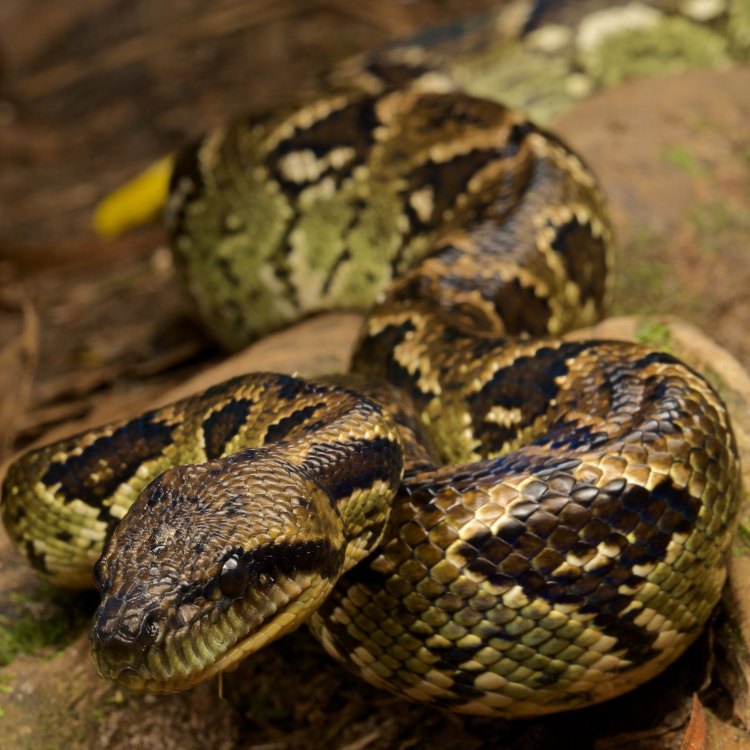
Madagascar Tree Boa
Animal Details Madagascar Tree Boa - Scientific Name: Sanzinia madagascariensis
- Category: Animals M
- Scientific Name: Sanzinia madagascariensis
- Common Name: Madagascar Tree Boa
- Kingdom: Animalia
- Phylum: Chordata
- Class: Reptilia
- Order: Squamata
- Family: Boidae
- Habitat: Madagascar's tropical rainforests
- Feeding Method: Carnivorous
- Geographical Distribution: Madagascar
- Country of Origin: Madagascar
- Location: Trees and vegetation in rainforests
- Animal Coloration: Patterns of light and dark brown
- Body Shape: Heavy-bodied with a stout build
- Length: 3-6 feet
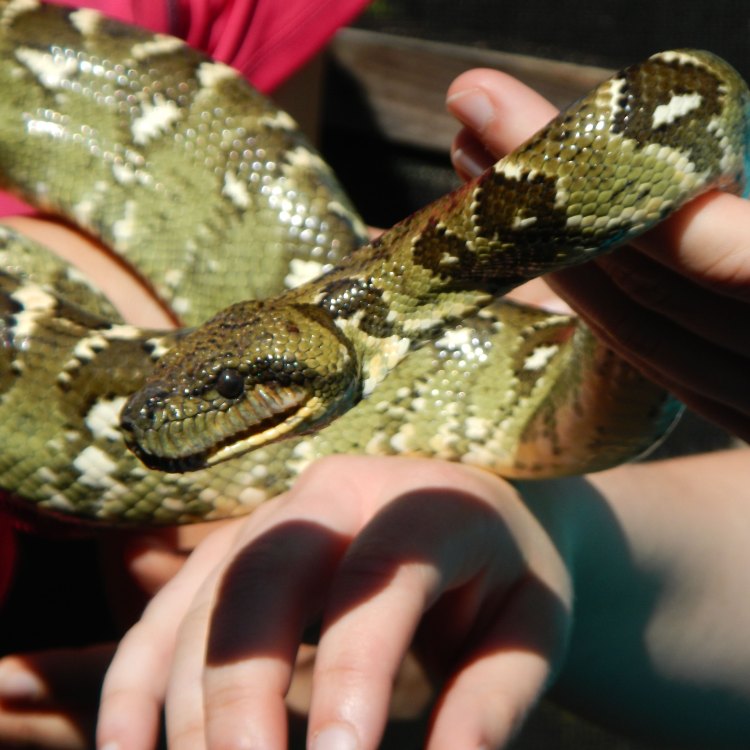
Madagascar Tree Boa
- Adult Size: 6 feet
- Average Lifespan: 15-20 years
- Reproduction: Sexual
- Reproductive Behavior: Mating occurs from October to December
- Sound or Call: Hissing sound when threatened
- Migration Pattern: Non-migratory
- Social Groups: Solitary
- Behavior: Nocturnal
- Threats: Habitat loss and degradation
- Conservation Status: Endangered
- Impact on Ecosystem: Plays an important role in controlling rodent populations
- Human Use: Not commonly used by humans
- Distinctive Features: Large, triangular-shaped head
- Interesting Facts: Madagascar Tree Boas are excellent climbers and spend most of their time in trees
- Predator: Birds of prey, large snakes

Sanzinia madagascariensis
The Fascinating World of the Madagascar Tree Boa
Amidst the lush forests and diverse landscapes of Madagascar, a hidden gem exists – the Madagascar Tree Boa. This unique and mesmerizing snake species is known for its large triangular-shaped head, remarkable climbing abilities, and important role in its ecosystem. However, despite its remarkable characteristics, this snake is facing grave threats and is currently listed as endangered. In this article, we will delve into the world of the Madagascar Tree Boa and discover what makes it truly one of a kind PeaceOfAnimals.Com.Native to the island of Madagascar, off the coast of East Africa, the Madagascar Tree Boa (Sanzinia madagascariensis) is a medium-sized snake belonging to the Boidae family. Growing up to 6 feet in length, these striking reptiles have an average lifespan of 15 to 20 years in captivity. However, in the wild, they face numerous threats that may shorten their lifespan, making it important to understand and protect this unique species.
One of the most distinctive features of the Madagascar Tree Boa is its large, triangular-shaped head. This feature is attributed to its specialized diet, which consists primarily of birds and rodents. As a skilled climber, the Madagascar Tree Boa has adapted to prey on animals that reside in trees, hence the need for a head that can easily swallow large prey. Their sharp teeth and constricting abilities make them formidable hunters in their natural habitat.
Despite their intimidating appearance, the Madagascar Tree Boa is a rather elusive and solitary species. These snakes are nocturnal, meaning they are most active during the night Malayan Tiger. They spend most of their time coiled up in the branches of trees, using their excellent climbing abilities to move through the canopy. Sightings of Madagascar Tree Boas are rare, making them a mystery to many. However, when threatened, these snakes let out a distinct hissing sound, warning potential threats to stay away.
The reproductive behavior of the Madagascar Tree Boa is also fascinating. They are a sexually reproducing species, meaning they require a mate to reproduce. Mating occurs between October and December, and females can lay up to 10 eggs at a time. These eggs take about three months to hatch, with young snakes measuring just over a foot in length. Interestingly, female Madagascar Tree Boas have been known to give birth to live young in captivity, a rare occurrence in the world of snakes.
One of the most interesting facts about this species is its preference for a solitary lifestyle. Unlike other snake species that may form social groups to hunt or bask in the sun, the Madagascar Tree Boa spends most of its time alone. They may also be territorial, meaning they have a specific area they consider their own.
As with many endangered species, the Madagascar Tree Boa faces various threats that have led to its declining population. The primary threat to their survival is habitat loss and degradation. As human activities such as deforestation and urbanization continue to encroach upon their natural habitat, these snakes are left with fewer places to call home. The loss of trees also affects their food sources and their ability to move through the canopy.
The Madagascar Tree Boa also faces threats from predators. Birds of prey and large snakes are known to prey on this snake species. In some parts of Madagascar, they are hunted by humans for their skin and meat, although this practice is not widespread. In addition, they are sometimes collected for the pet trade, further impacting their already declining population.
Due to these threats, the Madagascar Tree Boa has been listed as endangered by the International Union for Conservation of Nature (IUCN). This classification is based on the drastic decline in their population over the years. And with no signs of the threats diminishing, it is crucial to take steps to protect this unique species before it becomes too late.
Aside from their importance in their habitat's delicate ecosystem, the Madagascar Tree Boa also plays a significant role in controlling rodent populations. As a natural predator of rodents, they help maintain a balanced population, preventing these animals from becoming nuisances or causing damage to crops.
Interestingly, despite their unique characteristics and important role in their ecosystem, the Madagascar Tree Boa is not commonly used by humans. In fact, they are not typically kept as pets due to their large size and specific dietary needs. In some parts of Madagascar, they may hold cultural significance, but their use in traditional medicine or rituals is not common.
Overall, the Madagascar Tree Boa is a captivating and remarkable species with a host of intriguing characteristics. From their large triangular-shaped head to their excellent climbing abilities and important role in the ecosystem, they are a true gem of Madagascar. However, it is important to understand and protect this endangered species to ensure its survival for years to come. By raising awareness and taking steps to preserve their natural habitat, we can help these unique creatures thrive in the wild.
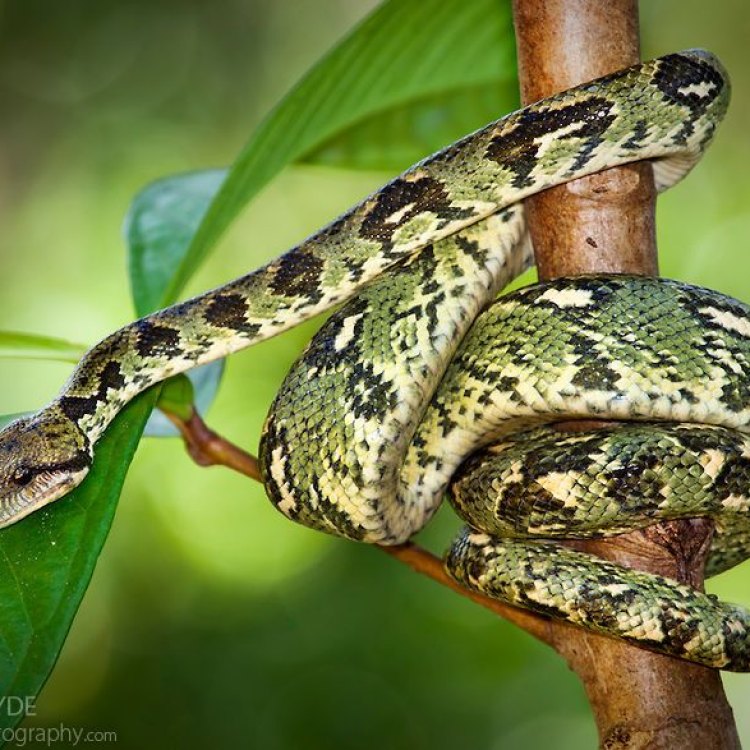
The Fascinating World of the Madagascar Tree Boa
Disclaimer: The content provided is for informational purposes only. We cannot guarantee the accuracy of the information on this page 100%. All information provided here may change without prior notice.

